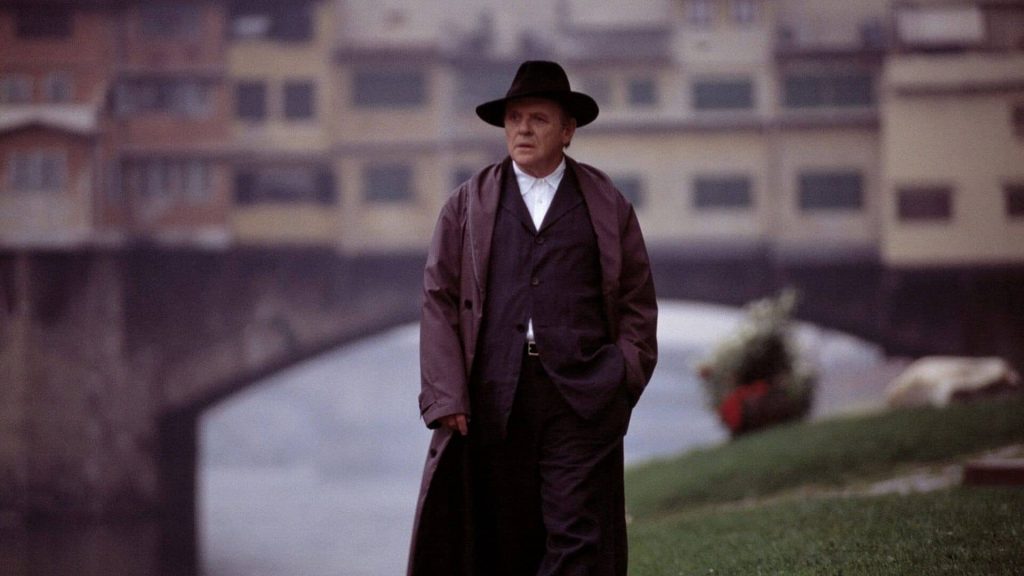They share a flamboyant sense of style, a passion for the exquisite and a history of dark and violent deeds; however you look at it, the city of Florence and Dr Hannibal Lecter were made for each other. Of course, when he first appears in Thomas Harris’ 1981 novel Red Dragon, Lecter is a long way from the banks of the Arno.
Sentenced to life imprisonment for a string of unspeakable crimes, he languishes in the depths of a maximum security labyrinth beneath the Baltimore State Forensic Hospital for the criminally insane. However, in the sequel, The Silence of the Lambs, when FBI trainee Clarice Starling seeks his help in the hunt for another serial killer, she finds that Lecter has decorated his cell with a sketch of the Palazzo Vecchio and the Duomo seen from the Forte di Belvedere. This is partly Lecter being devious; the picture is a clue: it turns out that the killer shes after lives in Belvedere, Ohio. But there’s more to his choice of Florence than a simple play on words as we discover once Lecter has finally escaped from his captors and gone on the run.

In 1994, Thomas Harris attended the trial of Pietro Pacciani, who was accused of the notorious Monster of Florence killings. A series of murders allegedly inspired by Botticelli’s Primavera, the case might have come straight out of one of his own novels, and Harris seized upon it to trigger the plot of Lecter’s third outing, Hannibal.
In Hannibal, Chief Investigator Rinaldo Pazzi of the Questura has made an important arrest in the Monster case, only to be disgraced when its revealed that he has planted the crucial evidence and got the wrong man. He needs another high profile arrest to save his career, and his curiosity lights upon the mysterious Dr Fell, who has lately applied for the job of curator of the Palazzo Capponi after the sudden disappearance of the previous incumbent. We know at once what Pazzi only suspects Dr Fell is the fugitive Lecter in disguise, his maroon eyes hidden behind well-cut sun-glasses, a scar on his left hand all that remains of the surgically removed sixth finger but whats perhaps more interesting is that Lecter also recognises Pazzi. He tells the detective that he resembles one of the glazed terracotta medallions by Luca della Robbia in the Pazzi family chapel in Santa Croce. This identifies him as a descendent of Francesco de Pazzi, who was hanged from the walls of the Palazzo Vecchio for his part in the murder of Giuliano and the attempted murder of Lorenzo de Medici on Sunday 26 April 1478.
It’s an unsettling experience for Pazzi, but Lecter is clearly at home in a city built by men who could slaughter their enemies and commission artistic masterpieces with equal relish. In fact, you could read the book as an ingenious twist on the venerable American literary tradition that links Europe’s cultural sophistication with moral decadence. Just think of all those Henry James heroines coming unstuck at the hands of cultivated but immoral European noblemen, or Orson Welless famous speech in The Third Man about how the Renaissance would have been impossible without the spur of war, while all that peaceful Switzerland has ever managed to produce is the cuckoo clock. Harris certainly has great fun with the idea. When Lecter reads the first sonnet from Dante’s La Vita Nuova, the burning heart that the poet’s lady is made to eat suddenly doesn’t seem quite so metaphorical after all!
Dante also provides Lecter with an appropriately spectacular means of disposing of the detective. Rather than alerting his colleagues to the killer’s presence, Pazzi decides to capture Lecter single-handedly so that he may claim a lavish reward. Lecter is onto him, of course, and after addressing an erudite gathering on the way in which greed is linked to betrayal in the Inferno and how both are punished by hanging, he ambushes Pazzi and leaves him swinging from the same window of the Palazzo Vecchio as his luckless ancestor. Ridley Scott’s lavish film version gives a good account of the Florentine sequences and makes the most of the stunning locations. Watch it closely and every now and again, in the shadows of the Palazzo Vecchio, you’ll catch sight of a non-descript caretaker who seems to follow Lecter like a sorcerer’s familiar. He is, of course, Il Mostro: the Monster of Florence, and in Dr Hannibal Lecter he recognises a kindred spirit.




